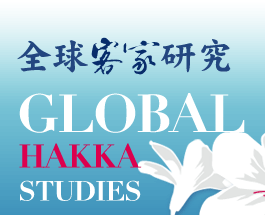|
|
| May 2015 |
 |
4 |
|
 |
| 頁數:113-142 |
| 浙江西南部客家話的聚變和裂變 |
| Equilibrium and Punctuation of Hakka in Southwestern Zhejiang |
|
 |
|

|
| 作者 |
吳中杰 |
| Author |
Al Chung-chieh Wu |
| 關鍵詞 |
浙江、客家話、連城、上杭、長汀、聚變、裂變 |
| Keywords |
Zhejiang, Hakka Dialect, Liancheng, Shanghang, Changting, Equilibrium, Punctuation |
| 摘要 |
浙江省西南部麗水、衢州地區的客家人大多是清代初期由福建西部汀州府的連城、上杭、長汀遷來的政策或自發移民,曹樹基(2013:192)根據浙西南各縣的方志統計,到乾隆41年(1776)時,汀州移民在該地已有23萬人,佔了處州府(今麗水)總人數的五分之一;然而歷來專事探討浙江客家人的文獻甚為稀少,主要只有曹樹基(2013)、傅長盛(2009)、張如山(2013)而已,對於浙江客家話的調查研究,目前更僅見曹志耘(2003、2004)二篇,且只討論金華市境內使用上杭古田口音的單一地點,並未言及該省客語的總體面貌,學術上尚存在著很大的開拓空間。
本文作者2001年撰寫博士論文時,即在麗水及其所轄之雲和、景寧、遂昌調查和客家話關係密切的畲話,是台灣少數對浙西南山區有熟悉度的研究者;亦曾發表過〈中國內陸各省汀州客語飛地之分布及分類〉單篇論文,文中專節討論浙江汀州客語之分布。加以2014年兩次赴浙調查,對於現存說客語的聚落之分布與語言類型有所掌握。依照地理區位和所操方言,本文將率先提出浙江客語的分群和分區為:1.龍遊和遂昌交界一帶的上杭中部白砂口音。2.松陽及雲和一帶的上杭北部通賢口音。3.龍泉、浦城、和遂昌交界一帶的連城及上杭東部古田口音。4.江山市南邊的連城西部文亨及長汀宣成口音、5.金華市婺城、武義的上杭東部古田口音。
此一語言類型的建立,除了考察當地各主要家族對於閩西祖籍地的譜牒紀錄外,更重視語言上的證據。閩西客語分歧度極大,每種口音通行的範圍甚小,雖不利於彼此跨區域溝通,卻有助於我們精確判斷浙江汀州客語的來源地,可到縣以下的鄉鎮。例如韻母上,閩西通攝一等舒聲韻,有央中元音或低元音讀法的差異,通攝三等的介音,也有-i-,-u-,-y-之別,通一入聲韻讀-e,-ai,-au者皆有。詞彙方面, 「蚯蚓」有 「河虫憲」、 「黃犬」、 「尿犬」等多樣說法。這些判斷標準,可以把汀州原鄉和浙江現居地的語言偶然相同的機率降到最低。
按照Dixon(1997)的語言發展模式,以及朱曉農(2010)對其理論的闡釋,位在同一個區域的幾種語言,會趨向出現共同的特徵,謂之聚變 (equilibrium),然而,語言可能因為劇烈接觸而產生裂變 (punctuation),反倒走向分歧乃至創新。觀察閩西與浙西南的現象,我們發現連城話、浙南吳語有撮口-y作為主要元音或介音,福建上杭城關則否。但浙江上杭話有-y,其轄字和浙南吳語卻未必重合。同區域內的連城話、浙南吳語,促使浙江上杭話在語音系統上產生了-y音,是一種聚變。至於浙南吳語 ‘支微入魚'的規律,造成-y轄字集中在止合三;浙江上杭話則分布在流開三(*-iu-->-y),是異乎於連城話、浙南吳語的創新發展,宜歸為裂變。
|
| Abstract |
According to the investigation we have conducted so far, Hakka immigrants from Western Min have taken Zhejiang as their new homeland. Impacted by the local mainstream Wu, there are only a few traces of the Western Min shown in their tongue, such as ‘fi31(water)'.
Hakka from Western Min have dispersed footsteps through countryside among Zhejiang Province, which formed numerous dialect islands. In this article, we dissect their distribution and linguistic features. Their accents may be divided into Shanghang, Liancheng, and Changting, or a mixture of these; some are not crystal clear right now due to the lack of documentation, which urges further field research.
The contents of our questionnaire have been explicitly designed to dig out the key points of Western Min in both phonological and lexical aspects. Most of the items were adopted through the survey in the past years, and some brand new ones have been added depending on demands.
Issues we discuss in this paper include dialect contact between the latecomers and local residents, shared retention of the immigrants with their ancestors, different directions of sound and lexicon change among outliers, that possibly fit into the theory of equilibrium and punctuation proposed by Dixon(1997); since Hakka reached the stage of punctuation in Zhejiang, various vernaculars of Western Min should be nativized, respectively.
|
|
|
 |
|

